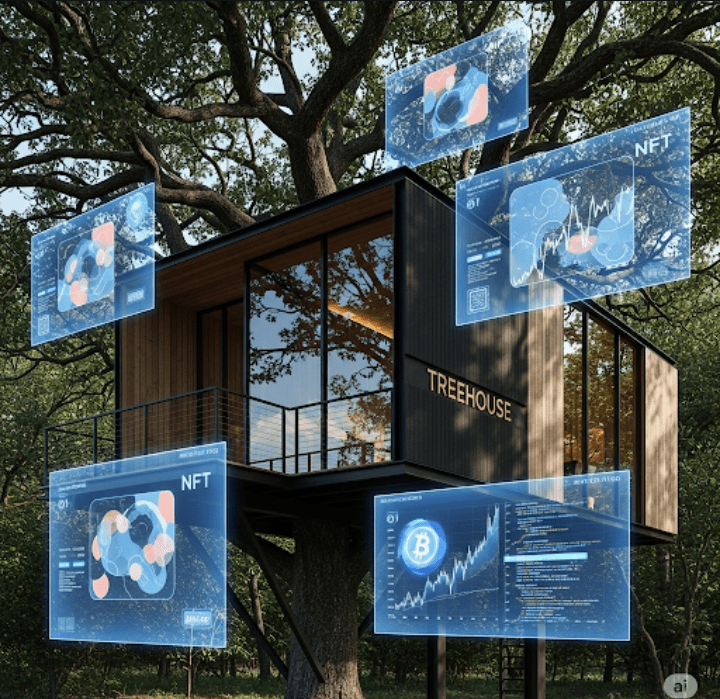NFT-backed lending is one of the most interesting and powerful innovations in the field of decentralized finance (DeFi). This mechanism allows NFT owners to leverage their unique digital assets to gain liquidity without selling them. The Treehouse Labs project is one of the pioneers in this field, offering a unique approach that combines the exclusivity of NFTs with the logic of DeFi liquidity optimization.
How Does NFT-Backed Lending Work? 🖼️@Treehouse Official
Traditionally, NFTs were viewed as collectibles that lacked intrinsic liquidity. Their value is determined by the market, but to obtain funds, the owner would have to sell their asset. Collateralized lending changes this paradigm. An NFT owner can use it as collateral to obtain a loan in cryptocurrency, such as Ethereum (ETH), USDT, or DAI.
The process can be summarized in a few steps:
NFT Valuation: Before issuing a loan, the platform must assess the value of the NFT. This can be challenging, as the price of unique tokens is often subjective. Treehouse Labs uses algorithms to determine the market price based on trading history, attribute rarity, and other factors. This helps establish the loan-to-value (LTV) ratio, which typically ranges from 30-50% of the assessed value.
Collateral: The owner places their NFT in the platform's smart contract. This smart contract serves as a 'digital safe' that temporarily holds the NFT as collateral. The owner retains ownership rights to the NFT but cannot sell or transfer it until the loan is repaid.
Loan Issuance: After collateral is placed, the platform automatically issues a loan in the chosen cryptocurrency to the borrower's wallet. All terms—the loan amount, interest rate, and repayment period—are fixed in a smart contract.
Repayment or Liquidation: The borrower can repay the loan with interest by the established deadline. Upon full repayment, the NFT is automatically returned to their wallet. If the borrower does not return the funds, the smart contract initiates liquidation—the NFT is put up for sale, and the proceeds are used to repay the loan and cover fees.
Advantages and Risks ⚖️
Advantages:
Liquidity Optimization: NFT owners can access capital without the need to sell their unique assets, which is especially valuable for owners of rare collections who do not want to part with their digital 'treasures.'
Flexibility: This opens up new opportunities for investors and collectors, allowing them to utilize their NFTs for other investments or personal needs.
Transparency: All loan terms are recorded in an immutable smart contract, which minimizes fraud risks.
Risks:
Market Volatility: The price of NFTs can fluctuate sharply. If the value of the collateralized NFT drops significantly, it can lead to rapid liquidation, even if the borrower is willing to repay the debt.
Valuation Complexity: Objective valuation of NFTs remains a challenge. Inaccurate valuation can lead to risks for both the borrower and the lender.
Smart Contract Risks: Like any software code, smart contracts can contain bugs or vulnerabilities, which could potentially lead to loss of funds.
Treehouse Labs: Innovative Approach 💡
Treehouse Labs implements several innovative solutions to address these issues, particularly by improving assessment and liquidation mechanisms. The project aims to make NFT-backed lending safer and more accessible to a wider range of users by combining the unique characteristics of NFTs with reliable DeFi principles.
This innovation opens the door to new financial opportunities. It transforms unique digital assets from mere collectible value into financial security instruments, which is an important step towards the full integration of the digital world and traditional finance.

